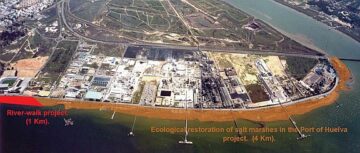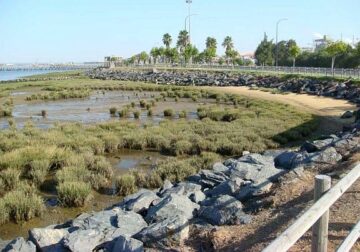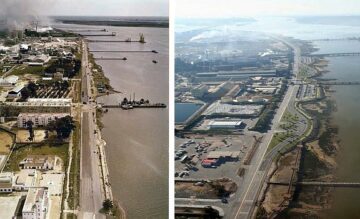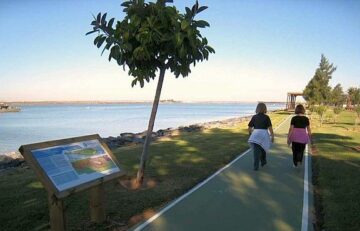Challenge(s)
How can marine and terrestrial biodiversity be maintained in Port City spaces?
Good practice
Modify infrastructure or build new facilities to protect ecosystems from the negative effects of port/industrial activities
Port infrastructures and activities can cause irreversible damage to seabeds and contribute to the disappearance of fauna and flora. By taking into account this environmental footprint and considering ecological engineering and eco-design measures for port infrastructures, this biodiversity can be restored and preserved. Moreover, it is possible to modify infrastructure or build new facilities to protect ecosystems from the negative effects of port/industrial activities. This was the solution taken by Huelva Port; by restoring natural areas, they increased biodiversity in port areas.
This good practice also includes objective 10.4 (Supporting the efforts of civil society to protect fauna and flora in the Port City territory) of the AIVP's 2030 Agenda.
Case study
The port of Huelva, which covers some 1700 hectares, is located in the estuary of the Odiel and Tinto rivers. The estuary is a zone of international ecological importance, and various sectors of the 12,000 hectares of marshland are classed as national parkland, biosphere reserve or Natura 2000 zones. In 2006, the Port of Huelva embarked on a programme to restore dunes, marshes and beaches along 4 kilometres of the Odiel’s left bank. These environments had been seriously deteriorated and contaminated by the port’s activity and also by intensive industrial practices.
Three years later, ecological engineering helped reduce the presence of invasive species by replanting Spartina maritima and allowed the growth of vegetation and biodiversity (macroinvertebrates, fish, and birds). The programme also includes the restoration of 1 km of banks on the same side of the Odiel and the creation of a pedestrian promenade. Educational signs have been installed along the path, with information about the local environment and the ecological restoration programme. Thanks to these efforts, the program has improved the port’s image among citizens while also providing ecological benefits. Now, more than 65 protected bird species can be observed within the port. Moreover, the port manages different groups and collectives, collaborating with entities such as SEO/BirdLife and the University of Huelva to bring educational awareness to society. The programmes vary from bird watching to environmental volunteering for young students.
Additional information:
https://www.puertohuelva.com/autoridad-portuaria/sostenibilidad-y-medio-ambiente/ (Spanish)




